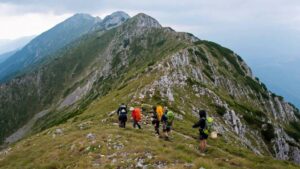FS 3.210
Managing adaptation risks: Addressing unintended consequences of NBS
Details
Full Title
FS 3.210: Managing adaptation risks: Addressing unintended consequences of nature-based solutions in mountain socio-ecological-technological systemsScheduled
TBATBAConvener
Co-Convener(s)
Schneiderbauer, Stefan; Esmail, Blal Adem; and Geneletti, DavideAssigned to Synthesis Workshop
---Thematic Focus
#IMC25, Adaptation, Conservation, Ecosystems, Hazards, Socio-EcologyKeywords
maladaptation, nature-based solutions, climate change adaptation, ecosystem dis-services, Environmental conflicts
Description
Nature-based Solutions (NBS) can address climate-related hazards in mountain regions and elsewhere, mitigating risks from floods and landslides to wildfires and droughts while enhancing biodiversity. However, implementing NBS can introduce ‘adaptation risks,’ where interventions may inadvertently increase vulnerability or trigger new hazards. Poor planning, unsuitable governance arrangements, or high system complexity may lead to maladaptation or so-called ‘response risks’ – impacting mountain and downstream communities. While the biophysical characteristics of mountain ecosystems (e.g. steep terrain, complex hydrology, and diverse vegetation) are key factors, adaptation risks are also influenced by social and technological system dynamics, including land-use practices, infrastructure development, local economic dependencies, and community engagement in planning. Maladaptation can thus manifest as infrastructural, institutional or behavioral. This session expands on the concept of adaptation risk and maladaptation to examine social, ecological, and technological factors that may lead NBS to unintentionally intensify different components of climate (and biodiversity) risks in mountain regions. Drawing on recent research, real-world case studies, and insights from a multidisciplinary expert panel, we will explore instances where NBS, such as afforestation, water retention projects, or slope stabilization, may contribute to increased risk and how this may be avoided. We will discuss how social and technological factors, including local governance, community buy-in, and socioeconomic pressures, shape the outcome of NBS and influence risk dynamics.


